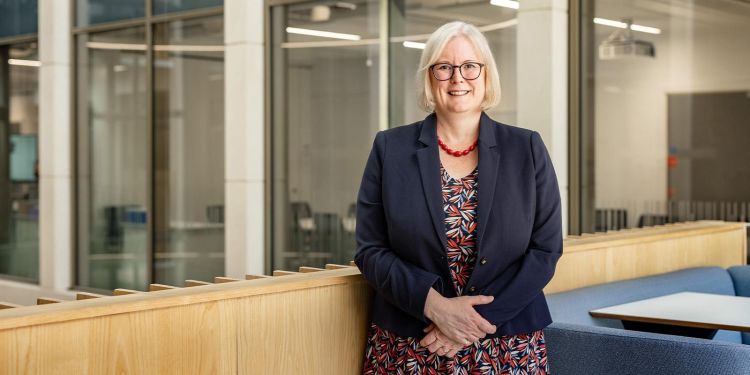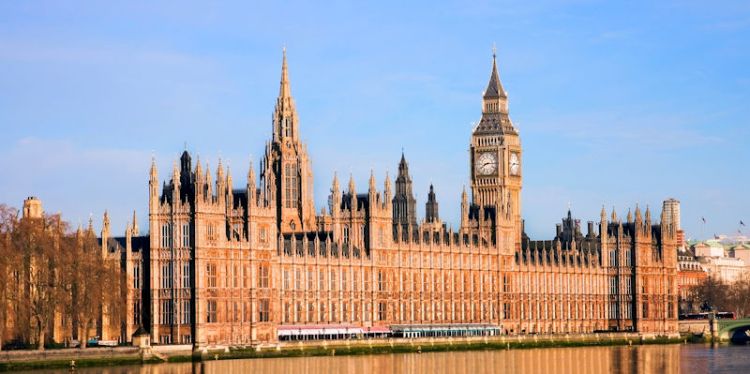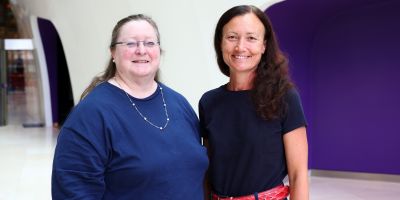How Cath Noakes’ Royal Society award is emblematic of life-saving collaboration

Professor Cath Noakes’ name may be on the Royal Society’s Gabor Medal in 2023, but in her view, many others are just as deserving of the honour.
This month, the Royal Society gave Professor Noakes its highest distinction for interdisciplinary work between life sciences and other specialties. First awarded in 1989, the Gabor Medal was created in memory of the engineer Dennis Gabor FRS, a Nobel Prize winner and the inventor of holography.
Professor Noakes was both surprised and delighted to receive the award, though she believes it also belongs to those she worked with, and often led, during one of the biggest international health crises of her lifetime.
“During the last three-and-a-half years, there has been such a collegiate effort to tackle the unprecedented challenge of a pandemic,” she said. “The Gabor Medal is for leadership of a multidisciplinary approach, but I feel this award really belongs to the huge number of people that I have had the pleasure of working with in the UK and internationally, who helped save countless lives during an extremely difficult time.”
Professor Noakes was a familiar face during the onset of COVID-19. Her expertise in the role of the environment in viral transmission saw her invited to serve on the UK government’s Scientific Advisory Group for Emergencies (SAGE), and she also co-chaired the Environment and Modelling Sub-Group – a role that earned her an OBE for her services to the COVID-19 pandemic.

Professor Noakes was invited to work with SAGE to help inform the government during the height of the COVID-19 pandemic.
During this time, Professor Noakes led several research studies, including the infection risk modelling work programme that brought together 20 sub-projects from 13 partners for the PROTECT National Core Study on COVID-19 Transmission and the Environment.
As a result, she worked with multiple organisations – and with senior scientists and policymakers, through to PhD and undergraduate students – all of whom contributed important knowledge that helped key decision-makers understand how respiratory diseases spread in indoor environments. Crucially, it assisted in fundamental, practical responses to the pandemic, from wearing masks through to ventilating buildings.
A changing perspective
Thanks in part to Professor Noakes’ collaborative approach, scientific and public interest in infection transmission – and the roles played by buildings and ventilation – has increased dramatically.
She said: “It’s transformed from a niche subject to a mainstream interest, and the awareness of the importance of indoor air quality on health and wellbeing appears to be at an all-time high.”
There are so many possibilities about how we can find better and more effective solutions to reduce exposures to infection and air pollution, so long as we bring different perspectives together.
Professor Noakes believes that research in these areas has become more entwined as a result. Now more than ever, you’re likely to see expertise from disciplines such as engineering, microbiology, public health, and behavioural sciences, working much more closely together.
“It’s this step change that excites me,” said Professor Noakes. “There are so many possibilities about how we can find better and more effective solutions to reduce exposures to infection and air pollution, so long as we bring different perspectives together.
“It’s also fantastic to see so many early-career researchers entering this field and working at the interfaces of what, for many years, were separate disciplines.”
Investing in the best
Alongside the Gabor Medal, Professor Noakes was also awarded £2,000 by the Royal Society, which she plans to reinvest directly into interdisciplinary studies.
She said: “I’m incredibly grateful to receive the Gabor Medal – every time I look at it, I’ll think of those who worked alongside me. I’ve learned so much from my work in recent years to know that it’s important to reinvest this kind award from the Royal Society into another collaborative study.
“I’m exploring the opportunity to create an interdisciplinary meeting that focuses on infection control in built environments – one that could support early-career researchers from different disciplines, giving them an open and egalitarian setting to work together and explore new ideas.”
In the meantime, Professor Noakes continues to call on governments, institutions and the public to avoid complacency with infectious diseases such as COVID-19, while also championing better building ventilation in workplaces and schools to create healthier and more productive environments.
Her newest role at the University begins on 1 January, when she becomes the new Pro-Dean for Research and Innovation for the Faculty of Engineering and Physical Sciences. Given her expertise and most recent success, it’s the perfect opportunity for her to further connect the diverse knowledge of the Faculty’s eight Schools – and that of the many other Faculties that work with them – to continue pushing boundaries at Leeds.
“We do some incredible science and engineering in the Faculty,” said Professor Noakes, “and I can’t wait to see what Leeds, and our partners around the world, can do to keep changing the world for the better.”




